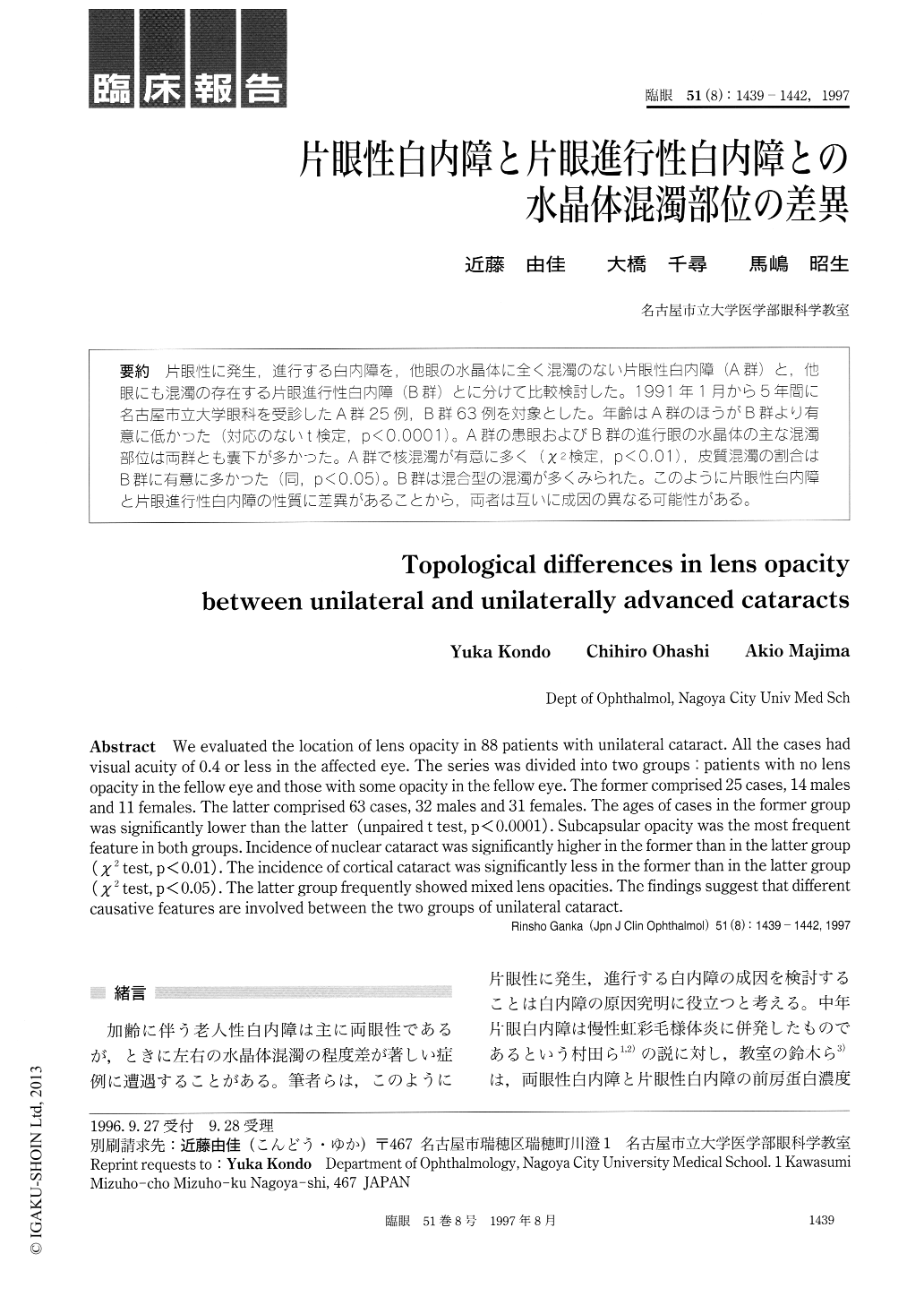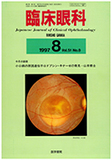Japanese
English
- 有料閲覧
- Abstract 文献概要
- 1ページ目 Look Inside
片眼性に発生,進行する白内障を,他眼の水晶体に全く混濁のない片眼性白内障(A群)と,他眼にも混濁の存在する片眼進行性白内障(B群)とに分けて比較検討した。1991年1月から5年間に名古屋市立大学眼科を受診したA群25例,B群63例を対象とした。年齢はA群のほうがB群より有意に低かった(対応のないt検定,p<0.0001)。A群の患眼およびB群の進行眼の水晶体の主な混濁部位は両群とも嚢下が多かった。A群で核混濁が有意に多く(χ2検定,p<0.01),皮質混濁の割合はB群に有意に多かった(同,p<0.05)。B群は混合型の混濁が多くみられた。このように片眼性白内障と片眼進行性白内障の性質に差異があることから,両者は互いに成因の異なる可能性がある。
We evaluated the location of lens opacity in 88 patients with unilateral cataract. All the cases had visual acuity of 0.4 or less in the affected eye. The series was divided into two groups : patients with no lens opacity in the fellow eye and those with some opacity in the fellow eye. The former comprised 25 cases, 14 males and 11 females. The latter comprised 63 cases, 32 males and 31 females. The ages of cases in the former group was significantly lower than the latter (unpaired t test, p < 0.0001) . Subcapsular opacity was the most frequent feature in both groups. Incidence of nuclear cataract was significantly higher in the former than in the latter group (χ2 test, p < 0.01) . The incidence of cortical cataract was significantly less in the former than in the latter group (χ2 test, p <0.05) . The latter group frequently showed mixed lens opacities. The findings suggest that different causative features are involved between the two groups of unilateral cataract.

Copyright © 1997, Igaku-Shoin Ltd. All rights reserved.


